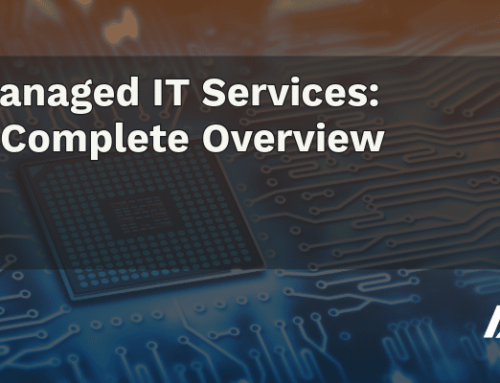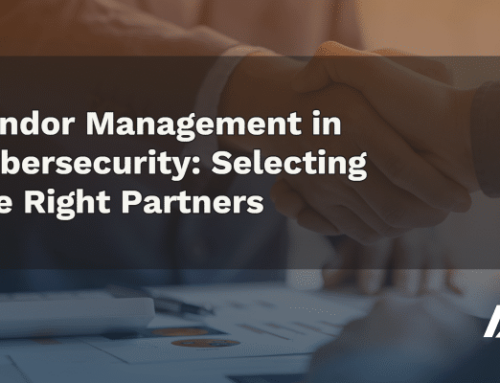In today’s data-driven world, your organization’s success is tied to its ability to protect sensitive information. From customer data and proprietary research to compliance with complex regulations, the stakes have never been higher. That’s where a Data Loss Prevention (DLP) policy comes in.
Whether you’re a global enterprise or a growing business, a DLP strategy isn’t just a good idea—it’s essential.
What Is a Data Loss Prevention (DLP) Policy?
A DLP policy is a formal framework made up of best practices, technologies, and rules designed to prevent the unauthorized access, sharing, or destruction of sensitive data. It goes beyond traditional cybersecurity by addressing both intentional and accidental data loss—protecting information whether it’s in motion, at rest, or in use. This protection applies across your entire IT ecosystem: email, endpoints, cloud storage, on-premise systems, and SaaS applications.
How Is Data Lost?
Data can slip through the cracks in a variety of ways. Here are the most common culprits:
Malware & Ransomware: Malicious software, including viruses and ransomware, can encrypt or exfiltrate sensitive data—often undetected.
Hardware or Software Failure: Outdated or faulty systems can lead to accidental file deletions or data corruption.
Human Error: From misconfigured settings to accidental deletions, human mistakes remain the leading cause of data breaches.
Unauthorized Access: Weak passwords or lack of access controls can allow internal or external parties to view and misuse data.
Natural Disasters: Fires, floods, or power outages can wipe out essential business information if not properly backed up.
Why Your Business Needs a DLP Policy Now
1. Strengthen Compliance and Avoid Penalties
DLP policies help ensure you’re aligned with data protection regulations like HIPAA, GDPR, and CCPA. These frameworks evolve often—and without a plan, non-compliance could lead to substantial legal and financial penalties.
2. Safeguard Against Financial Loss
Beyond regulatory fines, data loss leads to operational downtime, brand damage, and costly investigations. According to IBM, the average cost of a data breach is $4.45 million—and 94% of companies suffering a catastrophic data loss do not recover.
3. Gain Greater Visibility and Control
DLP policies give IT teams a clear view of how data moves within your environment. This helps detect misuse early and provides actionable insights to improve security practices.
4. Build Customer Trust
Customers, partners, and stakeholders want to know their information is safe. A transparent, effective DLP policy shows your commitment to security and earns confidence.
Best Practices to Develop an Effective DLP Policy
Here’s a breakdown of what to include in your DLP strategy:
1. Identify and Classify Sensitive Data
Define what constitutes “sensitive” data in your organization. This includes customer records, financial data, intellectual property, and more. Map where this data lives, how it’s accessed, and how it moves.
2. Consider All Data States
DLP tools and policies must address:
Data at Rest: Stored on servers, databases, and hard drives.
Data in Motion: Moving through networks and email.
Data in Use: Actively accessed or modified by users.
3. Implement Access Controls
Limit access to sensitive data using the principle of least privilege. Employees should only access the data necessary for their role.
4. Automate DLP Processes
Deploy automated tools to monitor data usage and flag policy violations in real time. Automation reduces response time and increases accuracy.
5. Regularly Audit and Test Your Policy
Run penetration tests and conduct periodic policy reviews to address vulnerabilities and keep up with evolving threats.
6. Leverage Machine Learning and AI
Advanced DLP tools powered by AI can analyze user behavior, reduce false positives, and detect anomalies more effectively.
7. Have a Clear Backup and Disaster Recovery Strategy
Even the best plans can fail. A secure, automated backup system ensures business continuity when unexpected disruptions occur.
8. Keep All Software Patched and Updated
Outdated applications are a prime target for cybercriminals. Ensure all systems—including DLP tools—are regularly updated.
How Microsoft DLP Works (Optional Feature)
If you’re leveraging the Microsoft ecosystem, DLP capabilities within Microsoft Purview can be deployed across Microsoft 365, Teams, SharePoint, OneDrive, and even endpoints. Features include:
Real-time policy tips to guide user
Automatic encryption or quarantine of sensitive data
Alerts and reporting via Microsoft Defender and Compliance Center
FAQs: Data Loss Prevention Policy
What is the main goal of a DLP policy?
To prevent unauthorized access, sharing, or destruction of sensitive data—whether accidental or malicious.
Do small businesses need DLP policies?
Yes. Small and mid-sized businesses are frequently targeted because they often lack advanced defenses.
How often should a DLP policy be reviewed?
At least once per year, or after significant regulatory or operational changes.
Is DLP just for external threats?
No. Many breaches are caused by insiders—whether through error or intent. DLP addresses both.
Can DLP help with compliance?
Absolutely. A well-designed DLP policy supports compliance with HIPAA, GDPR, CCPA, PCI-DSS, and other frameworks.
If your business doesn’t have a data loss prevention policy—or if you’re unsure whether it’s effective—now’s the time to act. At AccountabilIT, we design DLP policies tailored to your organization’s size, industry, and compliance requirements.
Whether you need help with Microsoft Purview, endpoint protection, or automated backups, we’ll guide you through every step of your security journey.
Let’s protect your business—before data loss becomes your reality
Contact us today to schedule your data protection consultation.




